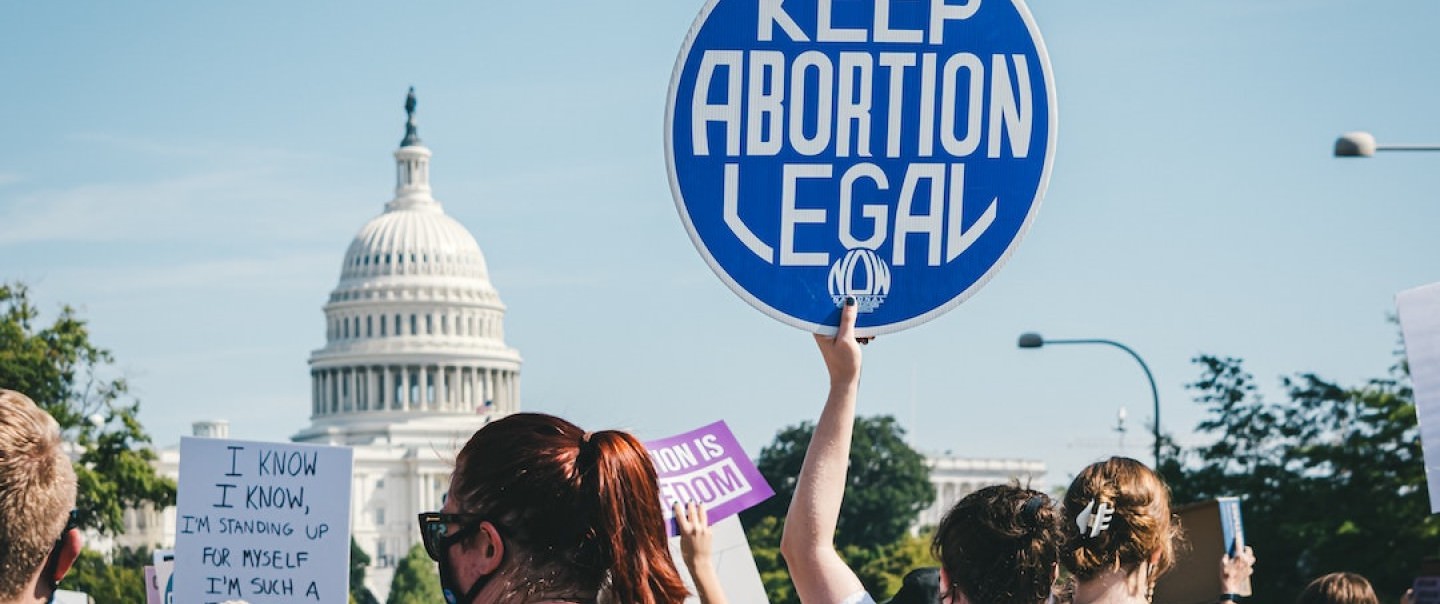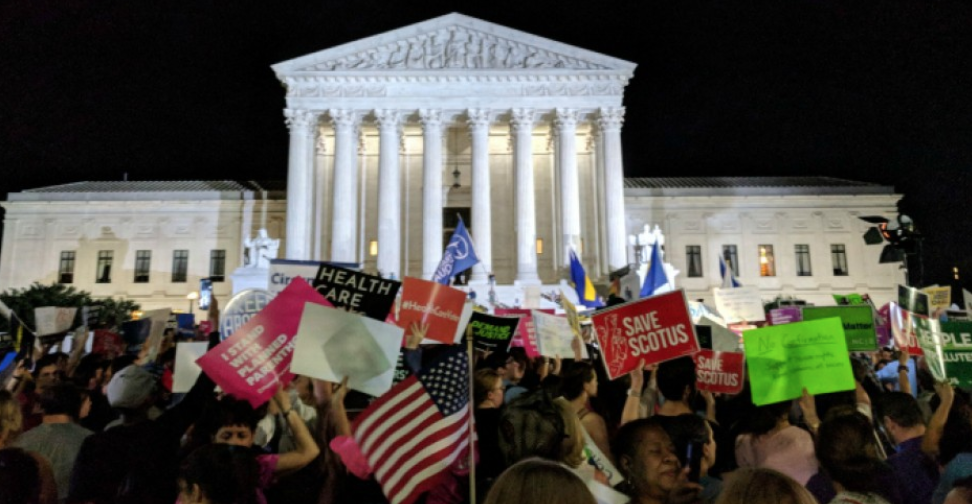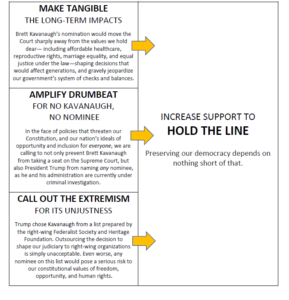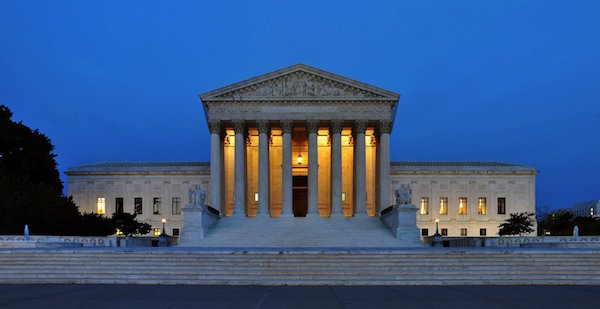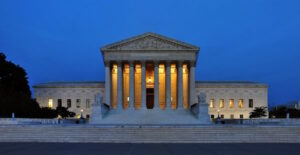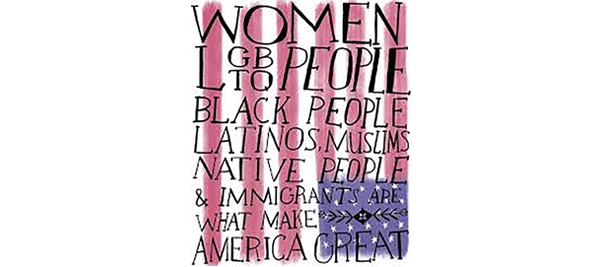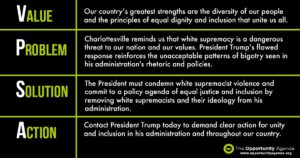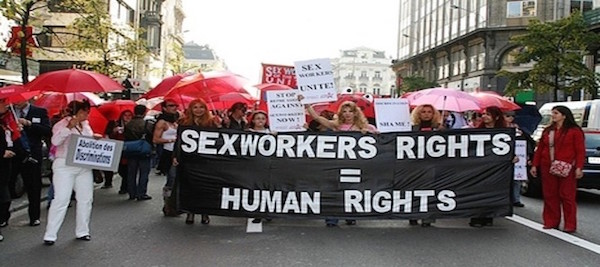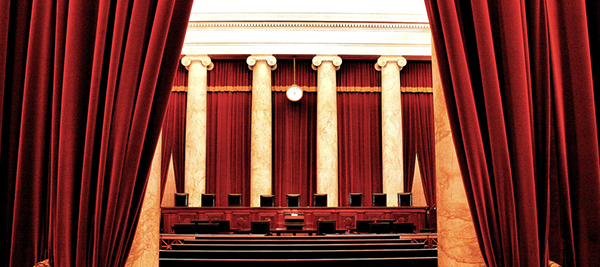We all deserve to have our voices heard; our faces and experiences reflected in culture and media; and our unique needs addressed through relevant policies. However, when we fail to incorporate intersectionality into our everyday practices and policies, we leave parts of our communities behind.
Intersectionality, a term coined by Kimberlé Williams Crenshaw, recognizes that certain individuals face multiple and intersecting forms of structural discrimination. In this political climate marked by division and anxiety, it’s important for us to work together to incorporate different communities’ experiences with culture, policies, and media.
We’ve compiled ten tips for putting intersectionality into practice to promote opportunity for individuals and communities who face multiple and intersecting forms of discrimination. This list can serve as a starting point for social justice advocates, policymakers, journalists, and researchers interested in incorporating an intersectional approach in their work.
1. MULTIPLE STRUGGLES
Recognize that there are multiple forms of systemic discrimination that block people from realizing equal opportunity in the United States.
An intersectional approach acknowledges systemic discrimination due to sexual orientation and identity, gender and gender identity, race, economic status, immigration status, national origin, and ability, among other aspects of one’s identity, and that this systemic discrimination impacts access to opportunity. However, recognizing these multiple, systemic barriers to opportunity and multiple forms of prejudice is only the first step in adopting an intersectional approach.
2. INTERSECTING OPPRESSIONS
Appreciate that forms of systemic discrimination intersect with each other and present unique challenges for affected individuals and communities.
In the real world, people are often subject not only to discrimination based on multiple aspects of their identity such as their race, gender, and immigration status, but also to discrimination unique to the “intersection” of their identities. So, for example, the stereotypes and obstacles faced by a Latina immigrant differ from those faced by women of other races, native-born Latinas, or immigrant Latino men. Intersectionality goes beyond acknowledging the multiple forms of discrimination, and recognizes that the different forms of discrimination may intersect with each other and result in overlapping and reinforcing barriers to opportunity. These overlap- ping systems result in unique forms of discrimination that only impact those in that particular community. An intersectional approach might include focusing on the unique challenges that those who sit at the intersections of overlapping systems of discrimination face, such as Black immigrants (who face both racial discrimination and discrimination because of their immigration status) or homeless transgender young people (who face discrimination because of their gender identity, age, and housing status).
IN ACTION: Reproductive care facilities in a rural town in Texas close because of state-wide abortion restrictions. An advocate committed to intersectionality would not only look at how the restrictions impact women generally, but also how particular communities of women in Texas are impacted. For example, an advocate might write an op-ed about how low-income Mexican American women in a rural community in the South are unable to obtain reproductive care because they cannot afford to drive to the nearest medical provider for reproductive care. This op-ed could also describe how these women are hesitant to drive to the community with a facility because its sheriff is notorious for profiling and arresting individuals whom he suspects are undocumented based on their race. Writing about this community of women highlights how abortion restrictions uniquely affect this particular group due to the intersection of economic barriers and discrimination based on gender, race, and perceived immigration status. It is vital to highlight how they face multiple and intersecting barriers to their reproductive health beyond how women, generally, are impacted by the Texas restrictions. Further, advocates could organize and develop policy solutions to address the issues these women face to ensure that the discussion about reproductive rights includes the experiences of women who face particular forms of harm while connecting economic, racial, and immigrant structural discrimination. The benefit of this op-ed might include encouraging new alliances, promoting solutions that consider the unique perspectives of different stakeholders, and centering their voices and experiences in the discourses about the issue. Taking an intersectional approach allows social justice leaders to focus on solutions informed by the experiences and voices of these women; engages and activates new audiences in ways that resonate with their experiences and values; and supports and uplifts the voices of these women within alliances, at town halls, social media, and letters to the editor.
IN ACTION: In The Opportunity Agenda report, “Public Opinion and Discourse on the Inter- section of LGBT Issues and Race,” we looked at current public opinion and the role of ethnic and new media in both perpetuating and challenging myths and biases about LGBTQ people. The report examined the unique issues that LGBTQ people of color face and demonstrates an approach to research that is sensitive to intersectionality. Likewise, Black Lives Matter co-founder Alicia Garza adopts an intersectional approach to policing issues affecting black people and other people of color across sexual identity, immigration, and gender by advocating for a movement against police violence that includes the voices of black queer people, black people who are undocumented, and black immigrants.
IN ACTION: In The Opportunity Agenda report, “Reproductive Justice: A Communications Overview,” we describe several case studies that illustrate how campaigns have successfully adopted an intersectional approach in obtaining reproductive justice wins. For example:
- “Over the course of five years, from 2003 to 2008, the prevalence of rapes and sexual assaults on Indian reservations and the federal government’s dismal failure to investigate and prosecute these crimes went from being unknown to all but the victims and their families to being the subject of federal legislation. The issue’s movement from obscurity to the federal policy agenda happened in large part because of the efforts of the Native American Women’s Health Education Resource Center (NAWHERC) and other Native women advocates, and communications played an important role. Their success was based on a communications strategy that combined four components:
- Raising awareness within the National Congress of American Indians, the principal advocacy organization for American Indian and Alaska Native rights;
- Partnering with a human-rights organization with the resources to investigate, issue a report, and generate media coverage;
- Positioning themselves as the go-to experts on the issue;
- Engaging in media advocacy.”
3. VOICE
Respect the voice of those most affected by issues by centering their voices, respecting their goals for their communities, and stepping aside and allowing them to serve as spokespeople for their own causes.
Intersectionality requires recognition of the voice of those most directly impacted, because they are frequently excluded from mainstream conversations. Valuing voice means lifting up, promoting, and supporting the leadership and storytelling of those most affected by policies and practices and centering their substantive suggestions and values into any given project and media advocacy. Impacted communities have direct experience that makes them thought leaders in the movement for social justice. Valuing voice allows those who are affected by policies to play a substantial role in building their own story.
IN ACTION: Being formerly incarcerated in our society is, in and of itself, a particular identity that affects how an individual navigates life. The barriers to opportunity that system-involved people face are in many respects their own unique form of systemic discrimination. Criminal justice reformers should consider consulting formerly incarcerated individuals and others directly affected by arrests and imprisonment, such as family members, people on sex-related registries, and crime victims and survivors, before making criminal justice policies. For example, there has been growing awareness about the harmful practices that criminalize poverty through the incarceration of low-income individuals because they are unable to pay excessive civil court fines and fees. Projects focused on reforming these practices might consult judges and lawyers about local municipal court practices that criminalize poverty. This project could also include consultations with family members of women of color who have been incarcerated because they were unable to pay civil court fines or individuals who have been incarcerated and solicit their input for policy recommendations that respond to their unique challenges within the legal system.
IN ACTION: Policymakers should consult women before making reproductive health policies. The history of reproductive health movement in the United States is the perfect example of how important voice is. The movement started out as a pro-choice movement that arguably failed to adopt an intersectional approach until the onset of the reproductive justice movement, which made sure to consider the reproductive oppression of women of color, immigrants, LGBTQ communities, and others in vulnerable, marginalized situations when fighting for reproductive rights. The reproductive justice movement went beyond abortion rights and incorporated intersectionality to address issues of access to female reproductive health care, immigrants’ rights, LGBTQ, sex worker rights, amongst many others. As a whole, the reproductive justice movement goes beyond the right to not have a child and includes the right to have children and the right to raise them in safe environments. In this way, the reproductive health movement transitioned from one dominated by the voice of middle-class, white women to include the voices of LGBTQ people, people of color, and low-income women.
4. INCLUSIVITY
Be inclusive and incorporate different perspectives when talking about your issues.
When speaking about issues, it is critical to recognize that there are multiple voices within a movement; that there is no singular way of experiencing an issue; and that various voices and perspectives need to be considered in order to make real, lasting, and equitable change. For example, when speaking about the need to promote accountable policing, advocates should be mindful to uplift the experiences of Native American individuals, transgender communities, and women to ensure that the movement is inclusive, as their experiences within the system are often different, play into different narratives, and require different policing solutions. The “success” of an intersectional approach may be as simple as ensuring different voices are included in the dominant discourse about an issue, or identifying ways that different communities experience policies and laws.
IN ACTION: Community activists who are concerned that an undocumented woman in their community with a prior arrest for shoplifting will be deported, might stage a direct action to develop a public narrative about the perils of increasing criminalization of the immigration system and to highlight how community members like this woman will be impacted. Following this action, they might organize community members to attend town hall meetings with their federal and local legislators, and host a Twitter chat to highlight that this country should be welcoming to immigrants and should give even those with past mistakes a second chance. Community members’ advocacy for this woman might include the voices of undocumented people who are college graduates and professionals who talk about their experiences being undocumented, but it should also be inclusive of individuals with different backgrounds to move beyond narratives of the “good immigrant” and the “deserving few.” Here, being intersectional ensures that we do not inadvertently throw anyone under the bus by promoting short-term objectives that undermine our long-term goal of expanding opportunity for everyone and respecting everyone’s dignity.
5. FAMILY
Acknowledge that individuals with intersectional identities may face unique challenges in how their families are perceived and in building and sustaining their families.
An intersectional approach recognizes the importance of family, and that families are defined by those creating and sustaining them. Assessing whether there are unique impacts on the family allows for policies that ensure that those they care for the most are protected. Furthermore, women often play an integral role as care providers to children and other family members, and it is important to recognize all family structures and kinds of parents regardless of sexual or gender identity, marital status, age or biological connection to children (in the case of adoptive families, grandparents raising kids, step-parents, etc.) in making this assessment.
IN ACTION: A reporter who covers criminal justice issues doing a profile of a black woman who has been wrongfully incarcerated might consider whether this woman was a primary caregiver prior to her incarceration. The reporter might consider whether the woman has lost child custody, and research whether parental termination rates are high in her community because women of color are being racially profiled. By doing so, the reporter is able to tell a systemic story about how families are also being impacted by racially discriminatory criminal justice practices and make the connection to how the incarceration of black women destabilizes families and jeopardizes child custody, particularly within families of color that may be facing challenges due to systemic discrimination. This story might include the perspective of family members, and consider the generational impact of criminal justice policies.
6. DISAGGREGATED DATA
Ensure that data collection does not overlook the experiences of individuals with intersectional identities.
We should encourage our government to be transparent and accountable. One way to do this is to require data from government actors. This data can be disaggregated by age, race, religion, sex, gender, gender identity/expression, housing status, sexual orientation, HIV status, ethnicity, sexuality, immigration status, national origin, and religious affiliation, depending on the actor and the accountability needs of the community. Often data is unable to tell the story of communities that sit at the intersections because the data only focuses on singular aspects of their identity. Highlighting the importance of disaggregated data ensures that the experiences of communities with intersectional identities are not missing and can be uplifted. It protects the voices of those who are directly impacted by ensuring their unique experiences are recorded. It is also important to disaggregate data within groups—e.g., while Asian Americans generally fair relatively well in terms of educational outcomes, there are significant differences among Asian American nationalities, with Hmong, Laotian, and Vietnamese children facing particularly steep challenges. The “model minority” stereotype about Asian Americans tends to obscure this reality.
Researchers should be sensitive to the need for disaggregated data in public opinion research and in gathering research samples. Wherever possible, it is important to “oversample” groups (and the intersection of identities) that might not otherwise be represented in adequate numbers to draw statistically valid conclusions. This “oversample” is simply an appropriate sample of these groups, which allows researchers to make inferences about groups that are often silenced by more traditional sampling approaches.
IN ACTION: If a civilian review compliant board interested in addressing gender discrimination in policing publishes reports about women who have been subject to excessive force, but fails to publish disaggregated data about the instances of excessive force that involve Latina women or Asian women, these women with intersectional identities are not reflected in the data. This type of data collection effectively silences the experiences of individuals who face prejudice because of skin color, ethnicity, and gender.
7. INTERSECTING ISSUES & CROSS-ISSUES
Be open to thinking creatively about social justice issues, assessing how issues connect with seemingly unrelated topics, and considering how they may have unintended consequences for other areas.
Criminal justice issues are related to public health issues, and public health issues to poverty, and poverty to immigration and so on. Incorporating a truly intersectional approach requires routinely considering how various issues may be impacted, how they connect with each other, and whether one approach with one issue area will somehow undermine efforts by those working on a different, but intersecting issue area. Promoting access to opportunity requires deliberate consideration of how seemingly unrelated issues areas connect.
IN ACTION: The Immigrant Defense Project works to promote fairness and justice for immigrants in the United States and examines how issues within the criminal legal system have a unique impact on immigrants. Its work cuts across the issues of immigration and criminal justice.
IN ACTION: The Sex Workers Project is a project of the Urban Justice Center that works across the intersection of sex workers’ rights, human trafficking, policing, and LGBTQ rights. The project provides direct services to immigrant sex workers, who police frequently profile because of their appearance.
IN ACTION: Organizations that do not explicitly work across different issues may nonetheless form partnerships with organizations that work on issues that impact their communities. A group of lawmakers interested in providing bail funds for incarcerated women of color may develop a relationship with community organizations that focus on enhancing child welfare and monitoring group homes to develop a campaign to ensure that primary care providers are not incarcerated for minor offenses. These lawmakers might pass legislation that provides funds for organizations to promote collaborations that are intersectional. Funders can similarly provide funding, host convenings, and encourage groups to work in non-traditional ways.
8. COLLABORATION
Strive to collaborate with people and/or provide resources for people from different communities, issue areas, and sectors to promote transformative change.
Intersectionality should encourage cross-community, cross-sector and cross-issue collaborations, investing equally in each others’ issues, narrative goals and policy agendas. Activists, advocates, lawyers, artists, scholars, cultural workers, and strategists should work with each other collaboratively alongside those directly impacted. These types of collaborations encourage innovative solutions, expand networks, and encourage transformative change.
IN ACTION: The relationship between grassroots activists in Flint, scientists in Virginia, lawyers in Detroit, and a determined pediatrician from Michigan led to the public exposure of the Flint water crisis. Collaborations that allow individuals to work across disciplines and issue areas may lead to innovative findings, policy recommendations, and cultural works as well as a more complete understanding and eventual solution to the issue(s). Funders for social change should move beyond traditional models to promote collaborations that may bring together unlikely allies.
IN ACTION: Organizers from Black Lives Matter and the Movement for Black Lives and organizers for border communities, such as the Southern Border Communities Coalition, have been fighting against the harms of a militarized and weaponized police force. While in different spaces, these organizers’ ability to develop a shared narrative about the harms of militarized police in the face of an unaccountable police force may prove to be an effective way for building support against the increasing militarization of police. Furthermore, organizations that work with sex workers, such as the Sex Workers Project, might also speak out about militarized police and speak about their experiences with federal agents during raids, where militarized equipment is used in order to create a drumbeat about the problems associated with a militarized police.
9. HEALTH
Consider how discrimination and systemic inequality contribute to differing health outcomes and block access to healthy food, clean water, and fresh air.
The health of communities that face intersectional forms of discrimination is often overlooked. One practical way to put intersectionality into practice is to ask whether the particular health needs of individuals and communities that face overlapping and intersecting forms of oppression are being met. Looking at health data in terms of the intersections of race, ethnicity, and gender, for example, might reveal that Afro-Latinas are experiencing unique challenges that are different from Black or Latino communities or from Afro-Latino men. Similarly, Asian American women face unique risks of ovarian cancer and screening methods developed for white women don’t meet Asian American women’s health needs.
IN ACTION: After Hurricane Katrina, it came to light that a Vietnamese community had been living in a part of New Orleans particularly prone to water contamination, and were doubly hit by the floods. This was having adverse health effects, but it was harder for them to get help because, due to language barriers, they weren’t as aware of how to access health care and there weren’t enough translators.
10. COMMUNITY
While working in collaboration, highlight the importance of coming together as a community to achieve equal opportunity.
Intersectionality should highlight the importance of community. Community is a salient value for many Americans. Intersectionality recognizes this connection to community and amplifies the importance of ensuring that all members of the community are respected and enjoy access to opportunity. We should strive to include everyone in our work toward promoting social justice. We are all in the fight together and should develop narratives that ensure that none of us get left behind. Building community and encouraging alliances, coalitions, and looking out for each other will help us solve problems.

